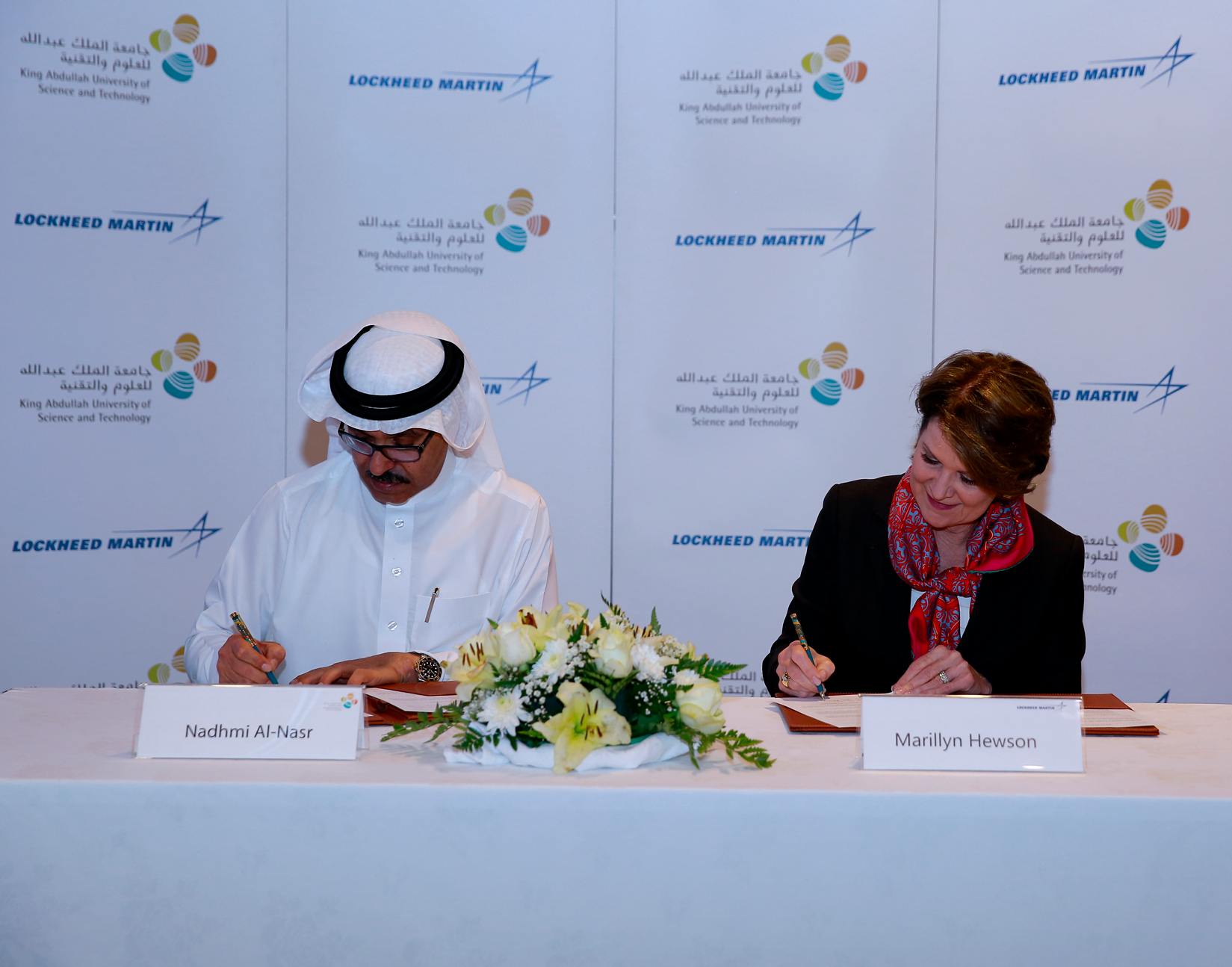Lockheed Martin signs agreement with KAUST

Lockheed Martin Chairman, President and Chief Executive Officer Marillyn Hewson (right) signs a memorandum of understanding with KAUST Interim President Nadhmi Al-Nasr on November 15 at KAUST.
Lockheed Martin, a global security and aerospace company, announced on November 15 that it will develop technology-related research projects with KAUST. The two organizations signed a memorandum of understanding to partner in a master research agreement.
“Lockheed Martin is pleased to partner with the Kingdom of Saudi Arabia and KAUST to engineer a better tomorrow and make Vision 2030 a reality,” said Marillyn Hewson, Lockheed Martin chairman, president and chief executive officer. “By joining our R&D efforts, we can produce innovative solutions for the world’s toughest challenges. At the same time, we can help develop leaders for the 21st century workforce.”
Hewson signed the memorandum while visiting the University, where she serves on the Board of Trustees.
Under the terms of the agreement, Lockheed Martin and KAUST will focus on developing projects that have applications across a variety of sectors and support the Kingdom’s Vision 2030 plans.
(From left to right:) Secretary of the KAUST Board of Trustees Bill Stamm; Chief Executive and General Manager for Lockheed Martin Saudi Arabia Alan Chinoda; KAUST Interim President Nadhmi Al-Nasr; Lockheed Martin Chairman, President and Chief Executive Officer
Marillyn Hewson; KAUST Vice President for Academic Affairs James Calvin; KAUST Vice President for Saudi Affairs Najah Y. Ashry; and KAUST Dean of the Physical Science and Engineering Division Yves Gnanou at the Lockheed Martin signing event on the KAUST campus
on November 15.
“As we look forward to a new era of progress, I am confident that this partnership with Lockheed Martin will allow us to advance R&D aligned to the KAUST mission of innovation and economic development,” said Nadhmi Al-Nasr, KAUST interim president. “Together we can leverage our strengths toward achieving tangible results in mutual technology-related goals.”

